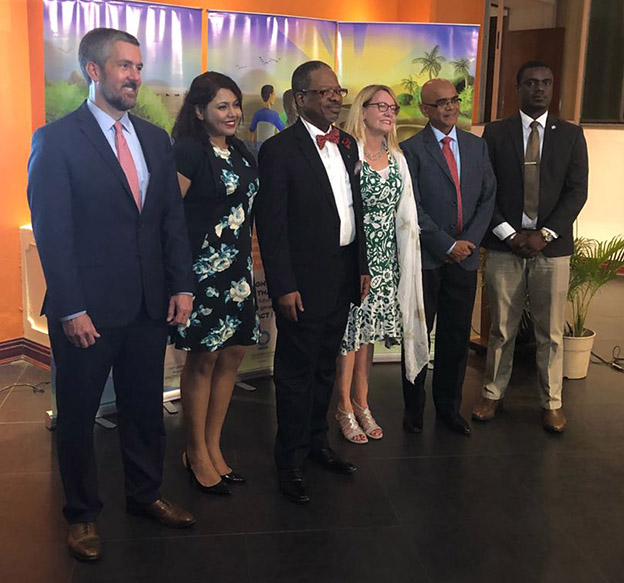Conservation International-Guyana (CI-G) and the ExxonMobil Foundation last Monday launched their US$10 million partnership which aims to advance a sustainable economy through investments in education, research, sustainable management and preservation of the country’s ecosystem,
The two will be working along with the University of Guyana (UG) and the Arizona State University (ASU).
CI-G has come in for flak for entering this partnership with the ExxonMobil Foundation. CI-G is a carbon-reducing, conservation organisation while ExxonMobil is a carbon releaser that has been accused of denying the impact of fossil fuels on climate change.
At the event at the Pegasus Hotel, Curtis Bernard, Technical Director of CI-G noted the signing last month of the US$10 million grant with the ExxonMobil Foundation at their office in Arlington, Virginia, along with a Memorandum of Understanding (MOU) between UG and ASU – who will be key partners in implementing the project under the theme “Guyana: Resilient and One.”
This implementation, he said, marked the type of diverse partnerships which are needed for the country to secure its future.
“Last December as well, CI-G launched our Beyond 2020 country programme strategy in Guyana and for us, Beyond 2020 is very important in terms of having very clear vision, but also really looking at the future of Guyana beyond 2020. Our vision is that by 2025, Guyanese will value and secure our natural heritage as a cornerstone of our wellbeing and development,” Bernard said, while emphasising that the CI-G’s works rest on the foundation of sound science, innovation and diverse partnership.
Vice President of CI-G, David Singh also said that the project will be very significant and while it is still in its early stage of development, they are hoping to have deeper engagements with many of the stakeholders to come up with the most strategic approach to invest in people and nature, with the ultimate goal of increasing conservation, and job and livelihood creation for a sustainable and diversified economy.
“This is a bold task and we certainly expect to look forward to working closely with all of you even as we design our future. Part of that process will build on the Memorandum of Philanthropic and Academic Understanding that we have established between our key partners – UG and ASU. This week we will start the process through a request for a proposal to carry out a scoping and design study that will detail the goals, the outcomes, the activities and the governance structure of the Guyana Resilient and One initiative,” Singh said, while noting that interested consultant firms will have three weeks to submit their proposals which they will be expected to implement by the end of December.
“It is a short timeframe, but we believe this year is absolutely important for us to know what we are going to do for the next five years. I want to conclude by reflecting on the history of developing countries and what they teach us about Guyana’s future and this will not be determined by Guyanese alone. History is not a step, we cannot build a wall around ourselves and neither can we sit on the sidelines and allow our story to be shaped and written by others. It is our time, this is our moment and it is ours to share and we certainly look forward to working with you as we shape the future of Guyana,” Singh said.
Singh also added that they will be considering the feasibility of working on a discrete set of easily implemented early activities that will run in line with the current initiative.
Jennifer Morris, President of Conservation International and Kevin Murphy, President of the ExxonMobil Foundation also made brief remarks at the launching, along with the Vice Chancellor of UG, Ivelaw Griffith.
“This grant is for the benefit of all Guyanese. It is for the fishermen, it is for the farmers, it is for the teachers, it is for the students, it is for the future generations. Environmental protection, oil and gas development and job training are things we can all agree on will benefit this great country,” Murphy said.
Griffith also noted that development cannot occur without the educational foundations being strengthened. They will not only focus on instructional learning since a critical part of the project will deal with enabling capital development, he added.
“I view one of the important value added parts of this project is to strengthen creativity and research, not only for our graduate students, but also the undergraduate students,” Griffith said.






